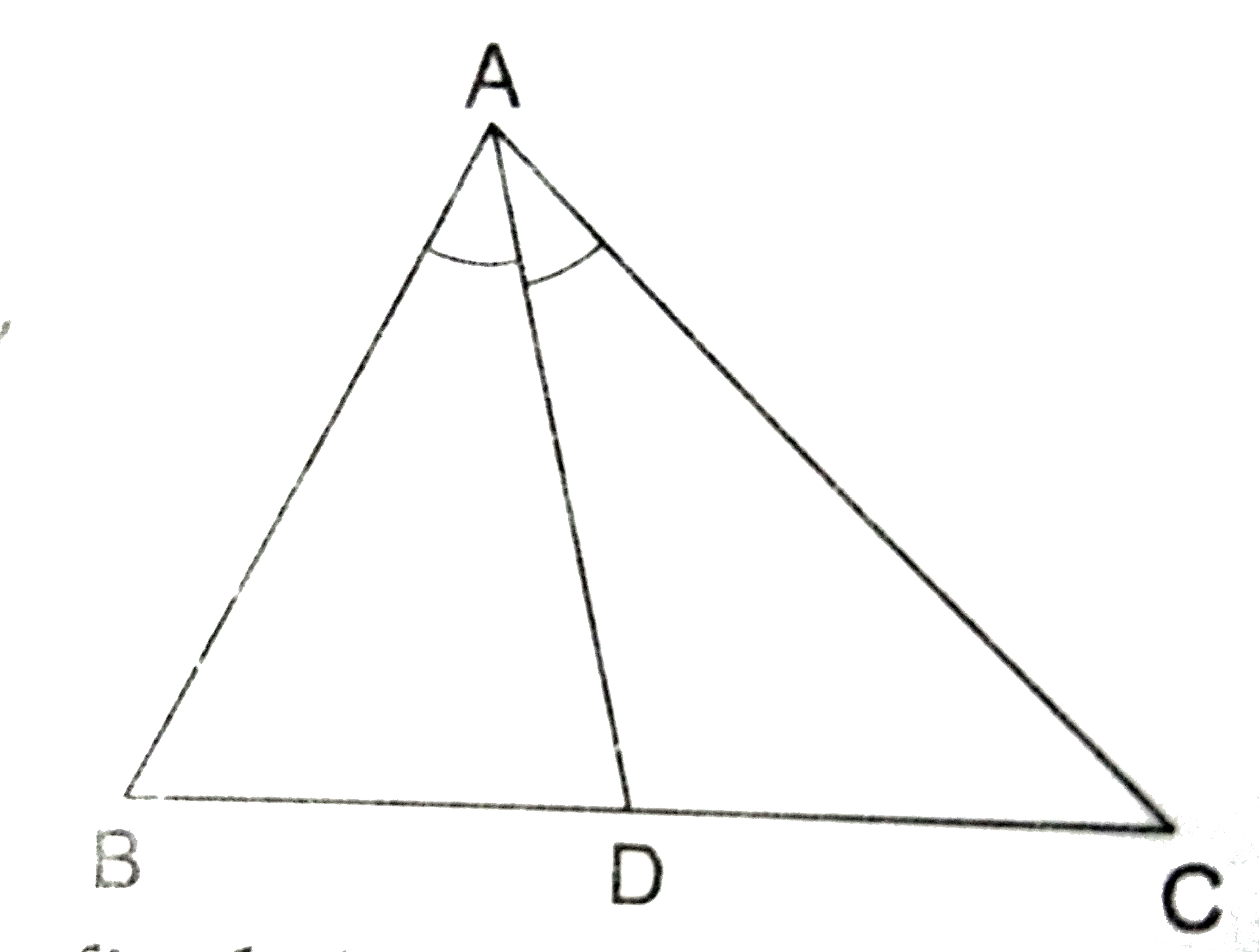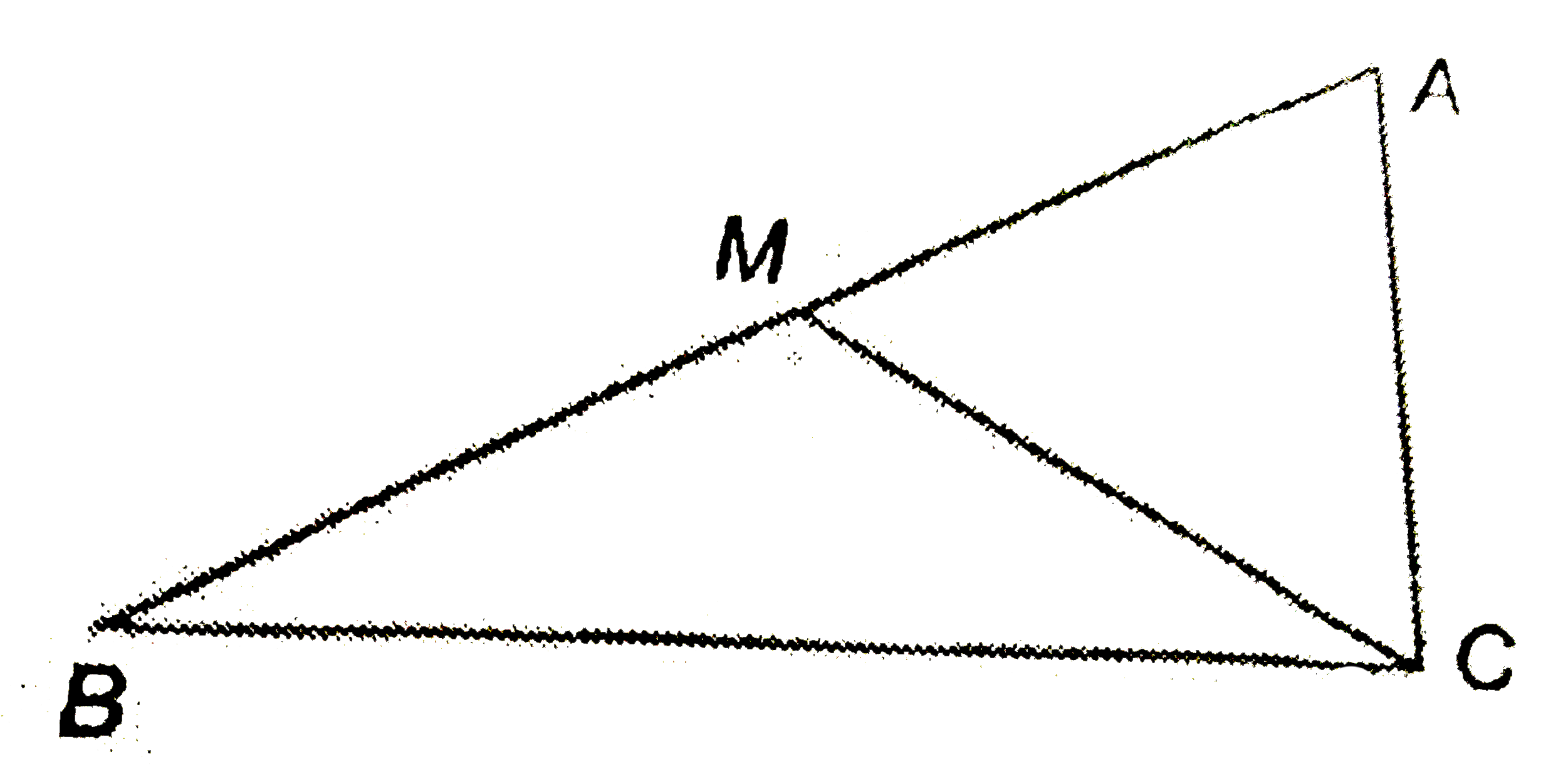In ΔABC, point M is the midpoint of BC,AB2+AC2=290cm,AM=8cm,find BC.
The correct Answer is:∴BC=18cm
To solve the problem step by step, we will use Apollonius's theorem, which relates the sides of a triangle to the median drawn from one vertex to the midpoint of the opposite side.
1. Identify Given Information:
- AB2+AC2=290cm2
- AM=8cm (where M is the midpoint of BC)
2. Apply Apollonius's Theorem:
Apollonius's theorem states:
AB2+AC2=2AM2+BC24
Here, AM is the median, and BC is the side where the median is drawn.
3. Substitute the Known Values:
Substitute AB2+AC2=290 and AM=8 into the equation:
290=2(82)+BC24
4. Calculate 2(82):
82=64⟹2(82)=2×64=128
So, we can rewrite the equation as:
290=128+BC24
5. Isolate BC24:
Subtract 128 from both sides:
290−128=BC24
162=BC24
6. Multiply Both Sides by 4:
162×4=BC2
648=BC2
7. Take the Square Root:
BC=√648
8. Simplify √648:
Factor 648:
648=81×8=92×8
Thus,
BC=9√8=9×2√2=18√2cm
Final Answer:
BC=18√2cm
- AB2+AC2=290cm2
- AM=8cm (where M is the midpoint of BC)
Apollonius's theorem states:
AB2+AC2=2AM2+BC24
Here, AM is the median, and BC is the side where the median is drawn.
Substitute AB2+AC2=290 and AM=8 into the equation:
290=2(82)+BC24
82=64⟹2(82)=2×64=128
So, we can rewrite the equation as:
290=128+BC24
Subtract 128 from both sides:
290−128=BC24
162=BC24
162×4=BC2
648=BC2
BC=√648
Factor 648:
648=81×8=92×8
Thus,
BC=9√8=9×2√2=18√2cm
BC=18√2cm
Topper's Solved these Questions
- BOOK - TARGET PUBLICATIONCHAPTER - PYTHAGORAS THEOREM EXERCISE - Practice Set 2.61videos
PYTHAGORAS THEOREM
- BOOK - TARGET PUBLICATIONCHAPTER - PYTHAGORAS THEOREM EXERCISE - Problem set-28videos
PYTHAGORAS THEOREM
- BOOK - TARGET PUBLICATIONCHAPTER - PYTHAGORAS THEOREM EXERCISE - Practice Set 2.41videos
PYTHAGORAS THEOREM
- BOOK - TARGET PUBLICATIONCHAPTER - PROBABILITYEXERCISE - Try This1videos
PROBABILITY
- BOOK - TARGET PUBLICATIONCHAPTER - QUADRATIC EQUATIONSEXERCISE - Additional problems for Practice : Based on Practice set 2.630videos
QUADRATIC EQUATIONS
Similar Questions
If in ΔABC, seg AM is the median, AB2+AC2=410 and BC=12 then AM=?
View SolutionIn a ΔABC,AD is the bisector of ∠A.
(i) If AB=6.4cm,AC=8cmandBD=5.6cm, find DC.
(ii) If AB=10cm,AC=14cmandBC=6cm, find BD and DC.
(iii) If AB=5.6cm,BD=3.2cm,andBC=6cm, find AC.
(iv) If AB=5.6cm,AC=4cm,andDC3cm, find BC.
 View Solution
View Solution
Knowledge Check
- Question 1 - Select One
In a ΔABC,D,EandF are respectively the mid-points of BC, CA and AB. If the lengths of side AB, BC and CA are 7 cm, 8 cm and 9 cm respectively, find the permeter of ΔDEF.
A13 cmB10 cmC12 cmD11 cm - Question 2 - Select One
In ΔABC,AB2+AC2=2500cm2 and median AD = 25 cm, Find BC:
A25 cmB40 cmC50 cmD48 cm - Question 3 - Select One
In △ABC,D, E and F are the midpoints of sides AB, BC and CA, respectively. If AB = 12 cm, BC = 20 cm and CA = 15 cm, then the value of 12(DE+EF+DF) is:
त्रिभुज ABC में, D, E तथा F क्रमशः भुजाओं AB, BC तथा CA के मध्य बिंदु हैं | यदि AB =12 सेमी, BC = 20 सेमी तथा CA =15 सेमी है, तो 12(DE+EF+DF) का मान क्या होगा ?A23.5 cmB5.88 cmC15.67 cmD11.75 cm
In ΔABC, point D is on BC such that ∠BAD=∠ACD. If AB=9cm,AD=8cm,AC=12 cmthen which of the following is true ?
View SolutionIn a ΔABC, D, E and F are the midpoints of BC, CA and AB respectively. If the lengths of side AB, BC and CA are 7 cm, 8 cm and 9 cm respectively, the perimeter of ΔDEF is a cm. The value of a/2 is
View SolutionIn ΔABC, if M is the midpiont of BC and seg AM ⊥ seg BC, then prove that prove that AB2+AC2=2AM2+2BM2.
View SolutionIn the adjoining figure, ΔABC is right angled at C and M is the mid-point of hypotenuse AB, If AC = 32 cm and BC = 60 cm, then find the length of CM.
 View Solution
View SolutionIn ΔABC,∠B is right angle and D is the mid-point of the side AC . If AB = 6 cm , BC = 8 cm , then the length of BD is
View Solution

